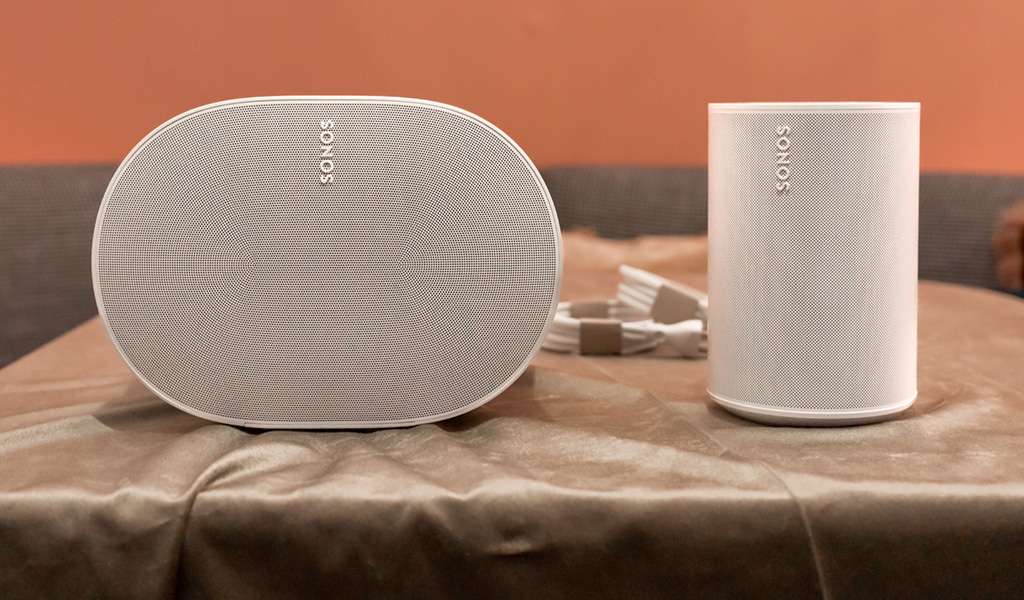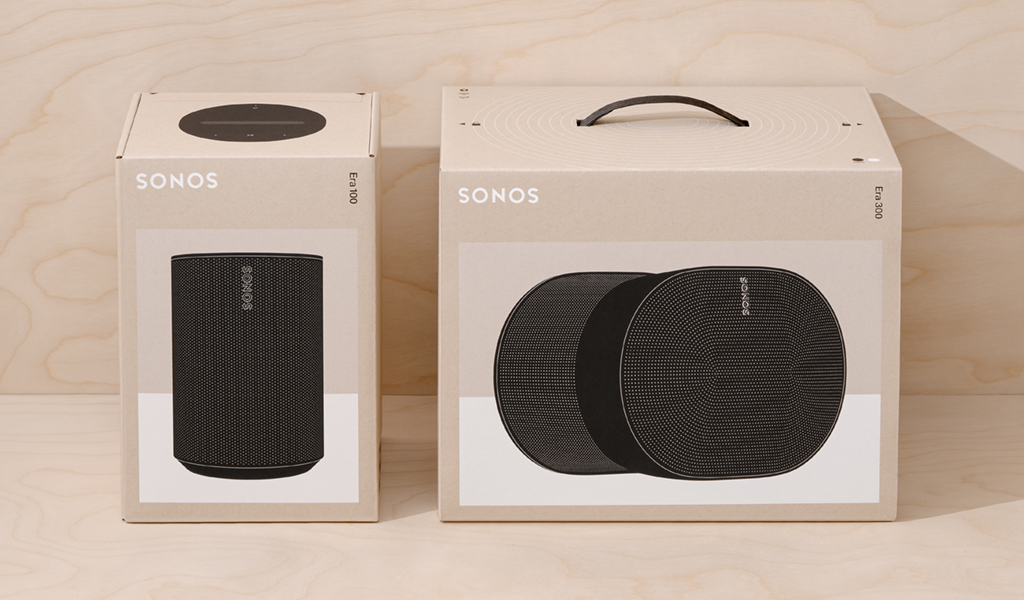
The new Sonos Era speakers have so many components inside, it’s hard to see them all even after you take off the outer shell. Not that you’re supposed to, but for Sonos, this marks a major shift toward sustainability, starting with the Era speakers and how they’re both manufactured and repaired.
The company wants to take this seriously enough that its “Climate Action Plan” commits to being carbon neutral by 2030 and net zero by 2040. To get there, something had to change with both the Sonos speaker lineup and their longevity going forward.
Recycled paper and plastics

The Sonos Era 300 is made with 40% post-consumer recycled plastics, while the Era 100 takes it a little further with 48% recycled plastics. This is for both the outer shell and internal plastics that you wouldn’t otherwise see. There are 93 screws in the Era 300 alone, enabling Sonos technicians to repair them with fewer challenges getting in the way. Theoretically, you could try repairing the speaker yourself, as no special tools are needed, but you have to be absolutely certain about what you’re doing. Sonos does not recommend users take that kind of chance, mind you, suggesting you send it in for repair instead.
The screws represent yet another change in that Sonos didn’t use adhesives for the Era 300 and Era 100. That means almost any internal damage caused by, say, an accidental fall or some issue during shipping probably won’t necessitate abandoning the speaker entirely.
Part of this involves other ways to recycle existing Sonos products, whether it’s dropping them off at your nearest Best Buy or getting a prepaid shipping label to send them directly to Sonos. It also means changing the packaging, which has been using recycled cardboard and soy inks for the last few years. Gone are the previous boxes, vibrant as they may have been, replaced with less colourful visuals. Sonos even went so far as to use recycled plastics for the tabs that lock and unlock the boxes.
Sustainability going forward

Taking this approach didn’t have to affect overall quality, though it did force Sonos to rethink how to make the two Era speakers just as efficient. They had to sound better under a different assembly under the hood—and use less energy to do it.
The Era 100 uses 42% less power than the previous Sonos One does, a number Sonos partly achieved by changing how the speaker sleeps when sitting idle. The company first introduced this type of mode in the Sonos Roam portable speaker, and says it’s committing to less than two watts of idle power consumption for all of its products since launching the Roam.
The plan is to also repatriate older Sonos products and recycle the plastics to use in future products, creating a sustainable ecosystem that can partly feed itself. In subsequent years the ratio of recycled to virgin plastic would continue to skew heavily toward to the former over the latter. This is significant for a brand that’s previously come under fire for not making repair and recycling easy on Sonos product owners.
To learn more, you can read the original announcement here. You can also see how the sustainability plan is shaping up here. Check out all the latest Sonos products available now at Best Buy.



